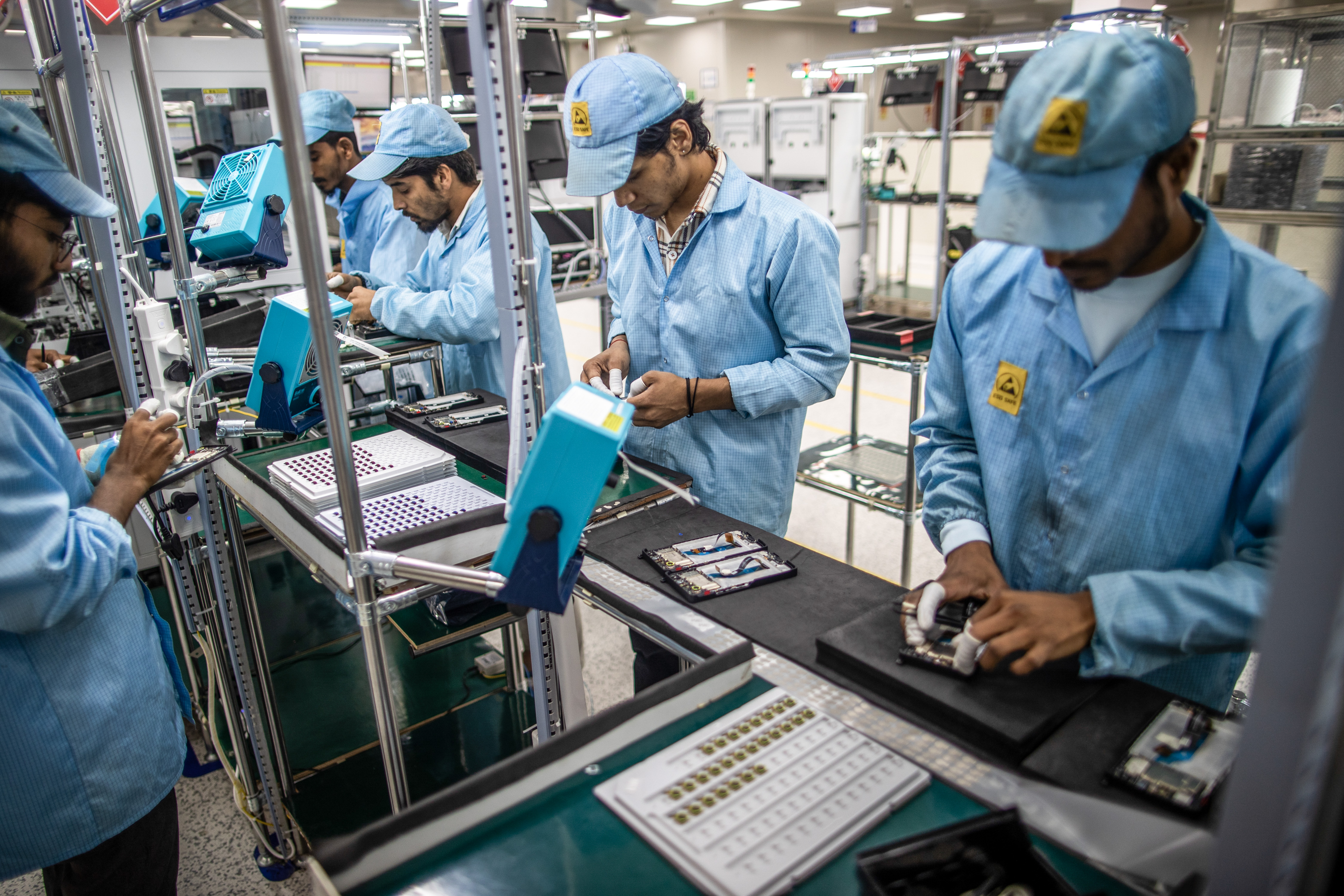India Takes Major Steps to Reduce Reliance on Chinese Electronics
India Takes Major Steps to Reduce Reliance on Chinese Electronics
By
Calder Monroe
Last updated:
October 30, 2025
First Published:
October 30, 2025

Photo: The Washington Post
India is accelerating efforts to reduce its dependence on imported electronic components, particularly from China, by approving the first seven projects under its $2.7 billion Electronics Component Manufacturing Scheme (ECMS). The approved projects will receive grants totaling 55.32 billion rupees ($626 million) and are expected to produce key components for smartphones, wearable devices, medical equipment, and aerospace applications.
India’s Electronics Trade Landscape
In fiscal year 2024-25, India exported $38.56 billion in electronic goods, marking an eight-fold increase over the past decade. Yet, the country imported nearly $36.8 billion in electronic components, with China accounting for around 40% of imports and Hong Kong contributing over 16% in the first half of the year.
The ECMS is designed to reduce this heavy import reliance, improve self-sufficiency, and strengthen India’s position in the global electronics supply chain. By establishing a robust domestic manufacturing base, India aims to mitigate risks arising from export controls and trade tensions between global tech powers.
Details of the ECMS Projects
The seven approved projects focus on high-value components such as camera modules, multi-layered printed circuit boards (PCBs), and high-density PCBs used in advanced electronics. These plants are projected to meet 20% of India’s domestic PCB demand and 15% of camera module sub-assembly requirements, while exporting around 60% of their output.
The ECMS has already received 249 applications from domestic and international companies, proposing investments of nearly 1.15 trillion rupees ($14 billion). Experts expect the initiative to further integrate India into global electronics supply chains and attract multinational manufacturers.
India’s Growing Electronics Market
India’s electronics component market is projected to reach $150 billion by 2030, with the overall electronics market—including finished goods—expected to scale to $500 billion, according to government estimates. Globally, the electronics market is valued at $1.8 trillion, with China dominating 60% of production.
India’s appeal lies in its large consumer base and potential as a manufacturing alternative to China. By hosting plants domestically, global electronics firms can serve local demand while exporting to international markets.
A notable example is Apple, whose exports from India rose 42% year-on-year to $12.8 billion in 2024. India recently overtook China as the top smartphone exporter to the U.S., achieving a 240% increase in smartphone manufacturing volumes in the quarter ending September 2025.
India has now become the world’s second-largest mobile phone manufacturer, reflecting a growing ecosystem that goes beyond mere assembly to include critical component production.
Strategic Impact and Future Prospects
According to Kunal Chaudhary, EY India, the ECMS underscores the government’s recognition that a strong domestic component ecosystem is essential for sustainable growth in electronics manufacturing. Ashok Chandak, president of the India Electronics and Semiconductor Association, added that the scheme will accelerate India’s emergence as a global hub for advanced electronics and semiconductors, while reducing reliance on imports.
With initiatives like ECMS, India is positioning itself to capture a larger share of the global electronics market, enhance competitiveness, and secure supply chains against geopolitical uncertainties, signaling a major shift toward self-reliance in high-tech manufacturing.
Popular articles
Subscribe to unlock premium content
The Rise of Miniature Home Aquaponics as a Luxury Hobby in Europe

How a Tiny Danish Candle Company Created a Global Hygge Brand

How Oatly Is Using Edgy Marketing to Conquer the Asian Plant-Based Market

The Rise of Miniature Home Aquaponics as a Luxury Hobby in Europe

How a Tiny Danish Candle Company Created a Global Hygge Brand

The Rise of Miniature Home Aquaponics as a Luxury Hobby in Europe









